How to look at the stars
Forming / / December 19, 2019

Elizabeth Kamenev
chairman Moscow Astronomical ClubAnd popularizer of astronomy. Assisted in the preparation of the material.
I live in the city. Can I watch the stars?
In the skies over large cities it is not always possible to see even the brightest stars. Particularly in the central regions. To blame gas pollution and light pollution - the bright electric light on a variety of lights, neon signs, spotlights. That is why the majority of astronomical observatories is located outside the city limits.
"Contaminated" the sky is too light no contrast for full visual studies. It will not save even a powerful telescope. When choosing a good location for observing amateur astronomers used the so-called backlight card.

Those who live far from the center or in small settlements, little more fortunate.
Available facilities for the citizens - the sun, moon, planets and some bright stars. To conduct astronomical observations directly from the balcony happens if the review does not cover the house and trees, and nearby there is a luminous advertising. the study of stellar
heaven the telescope can prevent and located in close proximity to bodies of water: the warm water vapor rise up, creating a turbulent swirling flows, and observed the objects begin to "shiver" lost clarity Images.If you want to choose for astronomical sessions perfect place, go out of the city - the farther the better. To see the Milky Way with the naked eye, and the other galaxies and nebulae - a telescope, it is necessary to leave at least 100 km from the big city. An ideal place for walks stellar astronomers believe the mountain.
Where to begin? How do you know where to look?
The stars are different from planets where comets come from, what galaxy nearest to our own Milky Way? Why celestial objects change position depending on the time of year, why shooting stars is not really stars, where to find the North Star? Answers to these and many other questions can be found in books for beginners astronomers. To start a fit "Astronomy for Dummies"Stephen Maran, books Vladimir Surdina and Brian Green. Do not interfere, and a "Directory of amateur astronomy" P. G. Kulikovskii. You can still pass the course "Foundations of astronomy"From the Moscow State University on a portal" Open Education ". Or search for lectures in their city - for example, the Moscow Planetarium is now gaining listeners on course "Popular Astronomy for Beginners".
In addition to books and useful services apps. Install the computer free program Stellarium. This planetarium, where you can enter your contact information and look at the sky a realistic model - such as we have seen with the naked eye, binoculars or a telescope. The free app Star Walk 2 for iOS and Android allows you to see the exact location of celestial bodies in real-time - just bring your phone or tablet with a digital compass to sky. The program also provides a forecast of the major astronomical events.

Price: Free
Price: Free
In addition, astronomical news - about meteor showers, the movement of celestial bodies, the parade of planets - can be found on the website Moscow planetarium. Or YouTube-Channel astro Channel.
Also see "Messier catalog». This is a list of the 110 most interesting space objects (Galaxies, star clusters, nebulae) that can be considered while in the Northern Hemisphere. Twice a year - usually in April and October, when the new moon - amateur astronomers arrange Messier Marathon. During the marathon time in one night to find and examine the telescope all 110 objects from the directory. True, the "run" it completely will only those in, say, India, Mexico or China - that is, between 10 and 35 degrees north latitude.
I do not have a telescope. I can see with the naked eye?
If you seriously get involved in astronomy, you do not plan to buy the optics is not necessary. Without a telescope and binoculars you can count the stars in the Big Dipper and Little, in the constellation of Draco, Cassiopeia and Cepheus. The entire territory Russia these constellations not touching - so they can be seen on any given day.
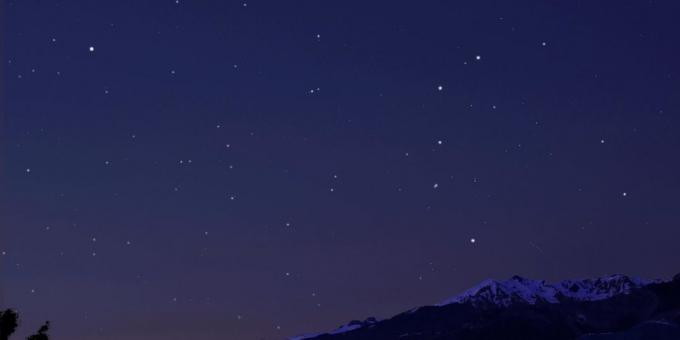
In the summer be sure to try to find in the sky Great Summer Triangle - it includes three brightest stars of the summer sky: Vega, Deneb and Altair.
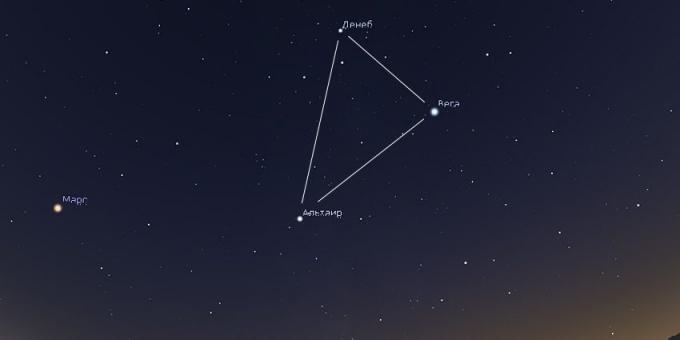
Winter - December to March - it seems Sirius binary star, the brightest in the night sky; Betelgeuse - red supergiant, in 1000 times the size of the sun.
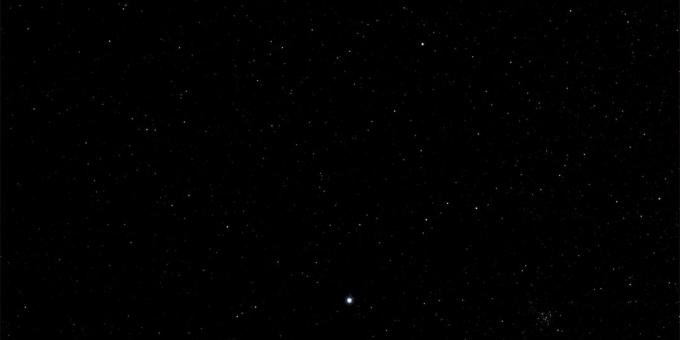
The naked eye can see the night sky five planets (because of their brightness): Mercury, Venus, Mars, Jupiter and Saturn.
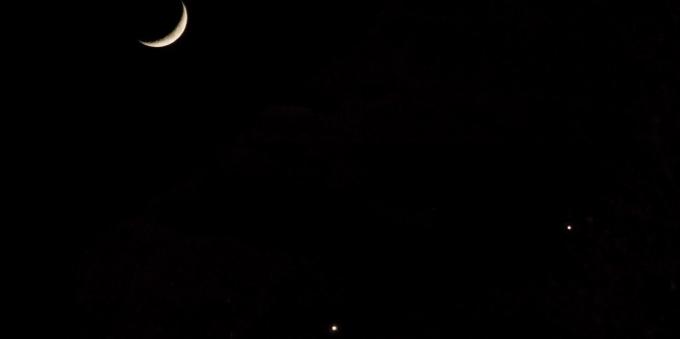
They are almost always visible, except for short periods of time when the fit is very close to the sun. It is best to observe the planet during the confrontation - when they are placed in front of the sun. Jupiter opposition in 2019 is expected June 11, Saturn - on 10 July. All at once will not see the planet. Schedule their appearance tells Stellarium.
Unlike the stars that when viewed with the naked eye, appear to be fixed relative to each other, planet (The word "planet" literally means Etymological dictionary: Planet "Wandering Star") move across the sky, and quite quickly. Furthermore, when we look at the star, it seems to us that it varies, flickers, and from the planets comes on steady.
And what about the shooting stars? They, too, can be seen without optics. In fact, it's not the stars and meteors - small solids, which are burned, falling into the atmosphere. The most impressive meteor shower - Geminids. But his time - the middle of December, when the weather is not too much has to observations. Another clear stream called "Perseids" in 2019 can be admired from 17 July to 24 August. Best of all it will be seen on 13 August. Calendar meteor showers in 2019 by the International Meteor Organization (International Meteor Organization - IMO) can be viewed hereInternational Meteor Organization 2019 Meteor Shower Calendar.
I have a tourist binoculars. I can see with it?
Tourist binoculars with a small (8-10-fold) increase and a small diameter lens (25-30 mm) allows to distinguish Moon large craters, consider the structure of the lunar surface. In addition, with such a pair of binoculars, you can try to see the four largest, the Galilean, Jupiter's moon Io, Europa, Callisto, Ganymede. More details can be found in book Edward Vazhorova "Observations starry sky with binoculars and a telescope."
To see more is to acquire more sophisticated optics - astronomical binoculars or amateur telescope.
I want to buy a telescope. What to look for?
A key parameter in selecting device - of the lens diameter. The higher it is, the more light is collected by a lens of a telescope or binoculars, and therefore, more detailed picture. It is important to the quality of optics - the clarity of the image depends on it. Prices for telescopes tend to infinity, but the beginner fit and relatively inexpensive devices. To begin we can choose optics with 70-120 mm lens diameter and a focal length of not less than 750 mm. The best are Sky-Watcher telescope, Meade, Celestron. Their price starts from 10 000 rubles. For example, Sky-Watcher BK 707AZ2 - the budget, but it is not a toy model.

For deep space observations (deep sky) - galaxies, Nebulae, star clusters - the perfect option would be a reflector on a Dobsonian mount. Reflectors - a telescope, in which mirrors are used as the light-collecting element. They are powerful, large diameter lens will focus a lot of light to consider distant and faint objects.

For those who want to look at the stars with two eyes, fit astrobinokli. The increase they have less than the telescope, in addition, it remains the same, because you can not change lenses.
Astronomical instruments - and telescopesAnd binoculars - quite heavy, and they are usually used in conjunction with a tripod: another hand shake strongly affects the image quality.
What can you see in a telescope and astrobinokl?
Armed with optics, you can start with a study of the lunar terrain. Consider mountains, craters and seas, to observe how the moves terminator - the line svetorazdela that separates the illuminated part of the moon from the one that is in the shade. Although observations of the Moon is important not so much the quality of the optics, as state of the atmosphere - the degree of its pollution - and the lack of turbulence.
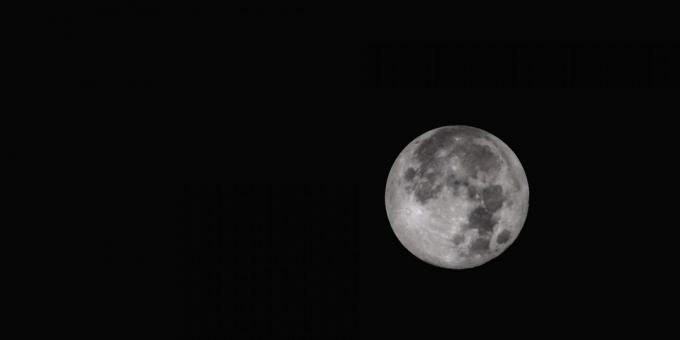
Jupiter when viewed through a telescope will be visible satellites, cloud belts and the Great Red Spot - a monstrous storm force, the largest in solar system atmospheric vortex that reaches a length of 50 to 000 km. Saturn will ring. It turns out that Venus, like the moon phase changes, and some of the stars - not just the stars, but multiple systems - double, triple and so on.
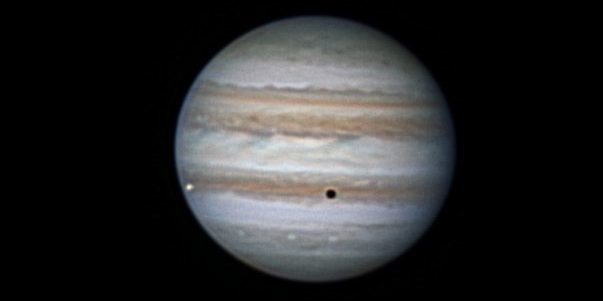
The Andromeda galaxy, the closest to the Milky Way galaxy great if to go away out of the city, you get to see and use the tourist binoculars - a misty cloud. But the telescope can observe it as a light spot with a few twists and haze. It is the same with one of the brightest nebulae - M42 in the constellation Orion. The naked eye it is seen as a pale spot, a telescope will show a gas complex structure similar to smoke.
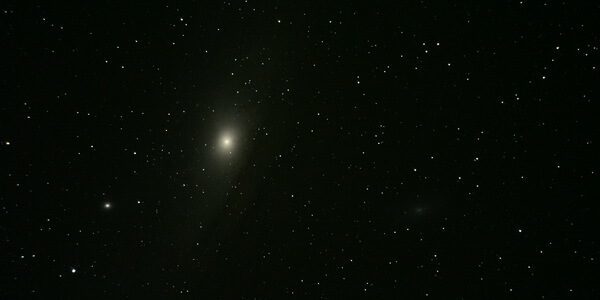
Bright comets that can be seen with the help of amateur instruments and especially the naked eye, fly up to the land not so often. Comets available for observation at the moment are shown in these tablesComets: table, Visual Comets in the Future (Northern Hemisphere) and hereBlog Fedor Sharov.
With the help of optics you can see the sun. With conventional telescope and special filters (filter use necessary - without them you are waiting for a serious and irreversible burn the retina!) Will see the sunspots. But for the observation of granulation, the chromosphere and prominences - tongues of fire, which arise from the release of solar material to a height of up to 40 000 km, - use special chromospheric telescopes, such as Coronado.
On the site Heavens Above or Android app, you can learn about upcoming spans the ISS and other satellites. If you look at ISS to the naked eye, it looks like a very bright moving point in white or blue. Optic will see station details. Of course, if you're lucky - it moves pretty quickly.
Price: Free
Layfhaker may receive a commission from the purchase of goods presented in the publication.
see also🧐
- 36 sites for those who are interested in space
- 10 documentary films about space
- How to study the stars



